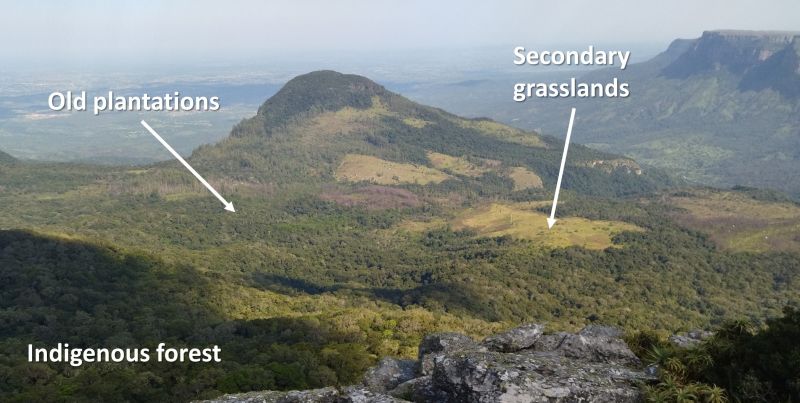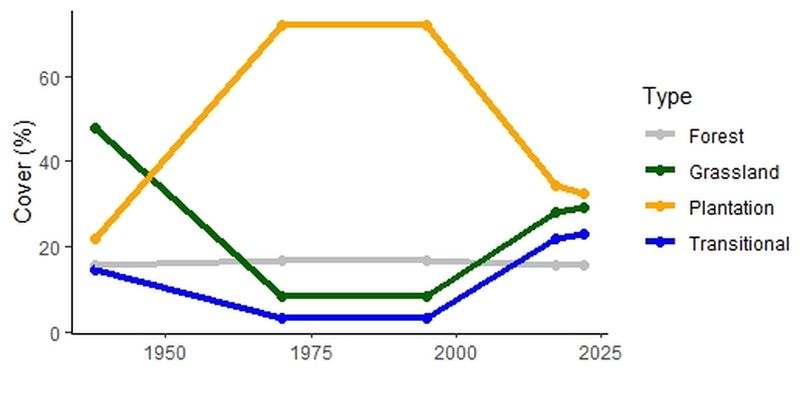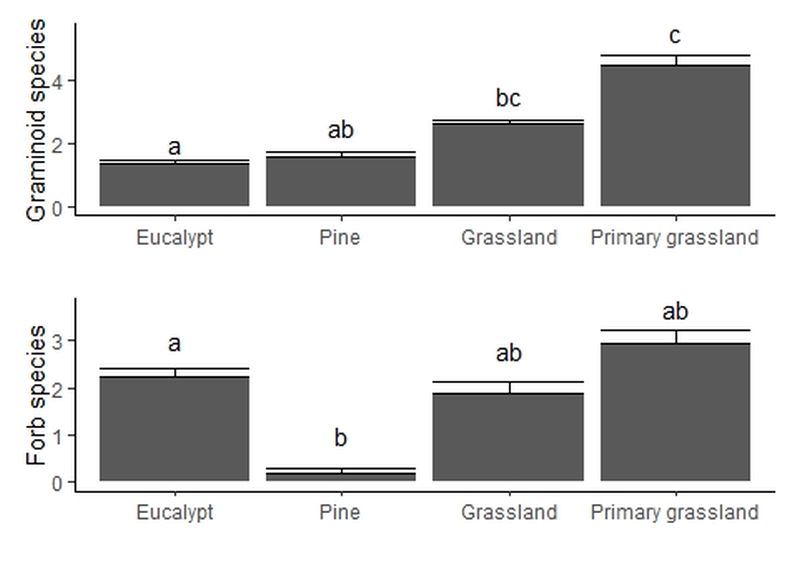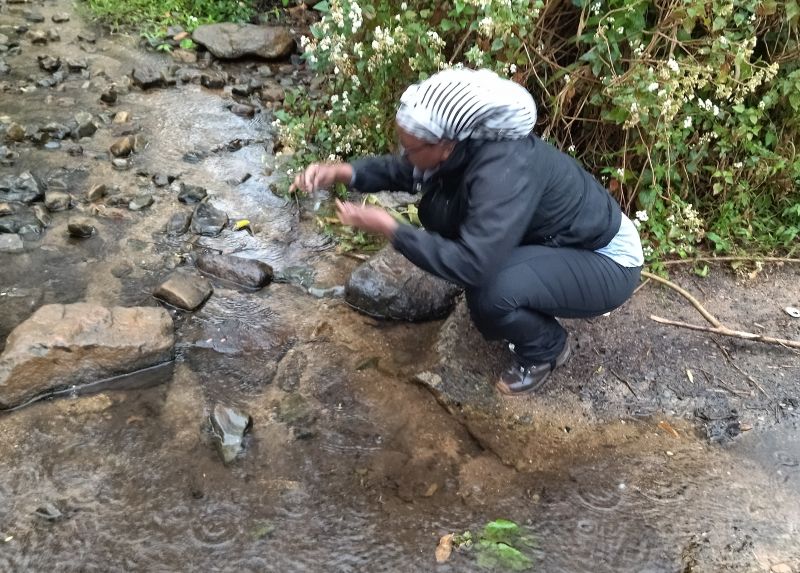eNews
#03 2024
The Mariepskop LTER: A platform for studying contemporary vegetation change in mountain catchments in northern South Africa
By Dr Tony Swemmer, Manager, Ndlovu Node, NRF-SAEON
Long-term research on the slopes of the Great Escarpment mountains at the border between Mpumalanga and Limpopo, is shedding light on the fate of ecosystems in response to major land use change.
The study area, on the slopes of Mariepskop Mountain, was the centre of a major afforestation programme in the early 1900s, when vast areas of savanna and grassland were transformed into forestry plantations. Following the decommissioning of the plantations in 2000, much of the area is now transforming back to grassland or savanna, or becoming thickets of both alien and indigenous trees, with big consequences for the ecosystem services. These services include regulating the flow of the perennial river which drains the 4000-hectare catchment that comprises this SAEON long-term research site.
Figure 1. A view of the mid-slopes of Mariepskop Mountain showing the variety of ecosystems at the site.
Figure 2. Analysis of historical aerial photographs and more recent satellite imagery shows how the area of grassland on the slopes of Mariepskop declined drastically following afforestation in the mid-1900s. In the past 20 years, following abandonment of the plantations, secondary grassland and other savannas (labelled “transitional” here) have increased equally rapidly.
Ecosystems that cover the South African mountains have always been a focus of SAEON research, since these extend over most the country’s strategic water source areas and are crucial for sustaining the flow of South Africa rivers. They also support exceptionally high levels of biodiversity and are often the first to be impacted by climatic changes as global climate change intensifies.
This is the reason SAEON took over two large-scale experimental catchments (Cathedral Peak and Jonkershoek). These sites include pristine and restored ecosystems (of fynbos and grassland) and are providing critical data on the functioning of these ecosystems.
However, equivalent research is missing from the northern parts of the country, where climate and vegetation is more tropical than temperate. For this reason, SAEON began establishing long-term meteorological, hydrological and vegetation monitoring at the Mariepskop site in 2019.
Sufficient data from this new venture have now been collected to start investigating how the ecosystems and hydrology of the area are responding to the abandonment of the plantations 20 years ago. Results on vegetation change, recently published in Frontiers in Conservation Science show that secondary grasslands, supporting surprisingly high numbers of plant species, have developed in many of the old plantations.
Others appear to have formed novel ecosystems comprised of pioneer indigenous forest trees, persistent Eucalyptus forestry trees and several other alien species. The occurrence of wildfires has played an important role in determining what develops on abandoned plantations, and in this area at least, frequent fires have promoted grassland restoration.
Figure 3. The mean number of species of herbaceous plants recorded from vegetation surveys in the main ecosystem types at the Mariepskop site over the past two years. Remaining plantations have relatively few species. Grasslands which have developed on abandoned plantations have a relatively large number of species, although still below that of benchmark sites of largely undisturbed (primary) grassland. These include many grass species (top panel) and non-grass species that occur in the grass layer (lower panel).
SAEON postdoc Retang Mokua collecting a water sample from the upper Klaserie River (Photo: Tony Swemmer)
Remaining plantations have relatively few species. Grasslands which have developed on abandoned plantations have a relatively large number of species, although still below that of benchmark sites of largely undisturbed (primary) grassland. These include many grass species (top panel) and non-grass species that occur in the grass layer (lower panel).
The vegetation changes currently underway are expected to produce changes in the hydrology of the catchment, and should lead to increased flows of the Klaserie River. This is the focus of a new research project by SAEON postdoc Retang Mokua.
Retang is currently working on developing a hydrological model for the site to simulate river flows under different vegetation types. She has begun collecting rain, river and groundwater samples for isotopic analysis, which together with SAEON data on rainfall and streamflow, will be used to customise a model for the upper Klaserie River.






